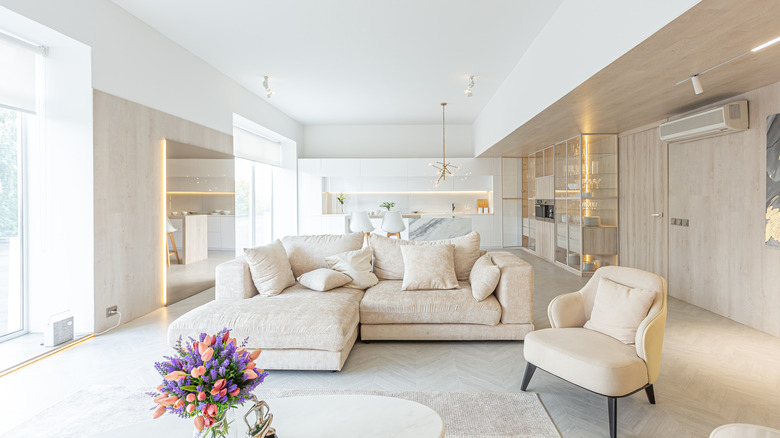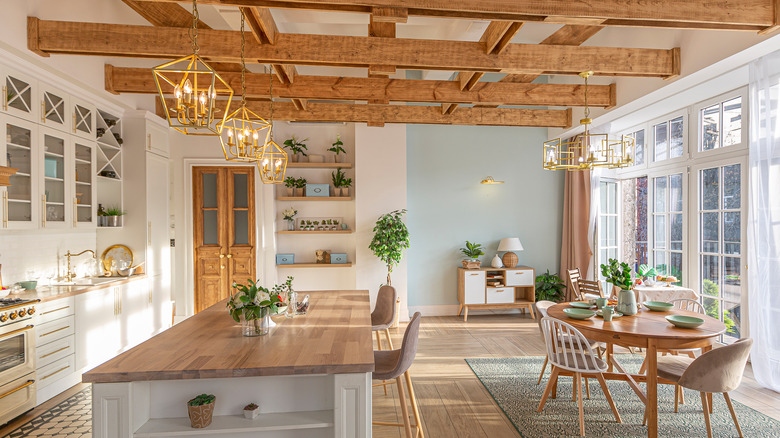Never Paint Your Ceiling These Colors
Most people see the same view when lying down, a white ceiling. But why are most people so restricted to this safe color when they are granted an endless array of options and color nuances?
Ever wondered why most bathrooms have light colors? Lighter shades of color open up the space. Thus, they're favored in most small areas or those with low ceilings as they give them the illusion of appearing higher. In contrast, the walls and ceilings of theaters, halls, or auditoriums may have dark colors. Darker colors envelope and warm up the space while embracing its people. Darker walls and ceilings also narrow the vision towards the main frame; the stage, screen in front, or simply the happening event, the décor, and people's fashion. Colors can contribute to the vision's focus and the space perception in how they are manipulated. Though there are no rules in design, there are always exceptional cases in aesthetics on which most people would agree. Which colors should you avoid when considering painting your ceiling?
Choose the right ceiling color
Choosing a color for your ceiling depends on the architectural design, the size of the space, current furnishings, lighting sources, and the pairing color of your walls. The commonly used white walls and ceilings can extend the area and reflect more light, though at times may result in a place that appears relatively cold.
Generally speaking, you could go for a monotonic option (the safest choice), where the color of the ceiling matches the walls or a subtle contrast in the ceiling that carries shades that are delicately lighter or darker than the walls. You can also go for a noticeable bold difference that either opens up the ceiling (in case it is lighter) or contracts the space (in case it is darker). The only risk in the latter option is that the room may end up looking like a bazaar. But what is life without the exhilaration and drama of trying something beyond banal anyway?! A pink ceiling, for example, may look appealing if pink cushions balance it on the sofa. A blue floor carpet may back up a blue ceiling, both alternatives appearing bold yet composed.
According to real estate agent Mia Cottet in Apartment Therapy, "People should never paint their ceilings a pastel color. It comes across as indecisive at best, preschool at worst." Light blue or green may carry the risk of appearing clinical. You also may want to avoid harsh colors like red, especially in places where you are seeking serenity, like in the bedroom or living room.
Think of the ceiling as a fifth wall
The ceiling is the fifth wall in a room, generally underrated though it takes a big chunk of the space. You may want to stick to white if the room doesn't have enough light, but if the passion for exploration is there, then take your time to consider the elements that are already existing in the space. After all, the overall appeal of any space is a byproduct of its ingredients, brought to vision by the existing natural and artificial light.
Renowned architect Steven Holl elaborates the former concept excellently through the formula: Architecture = Material x Light /Space. The formula hints that architecture is nothing more than light revealing numerous textures (and colors) in a contained space. Light invites textures and colors to our human sight and informs them. Thus, you ought to consider the natural and artificial light in your rooms because they bring the colors to life! You should then assess your space based on its given resources and aim to establish the right balance and composition between the colors and textures used, the associated lighting, and furniture elements.


